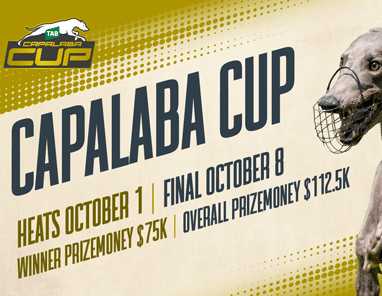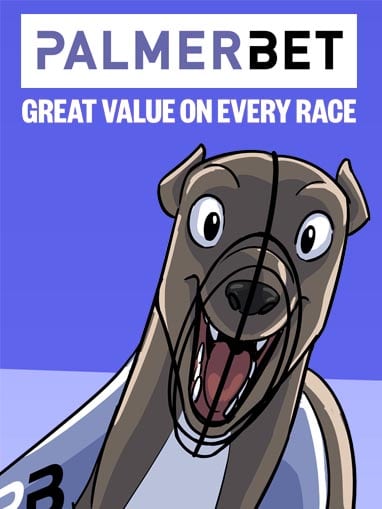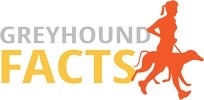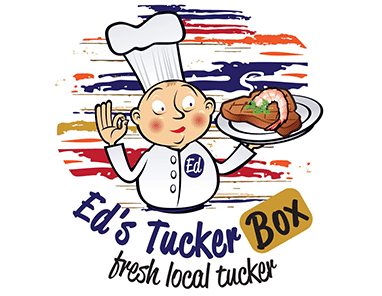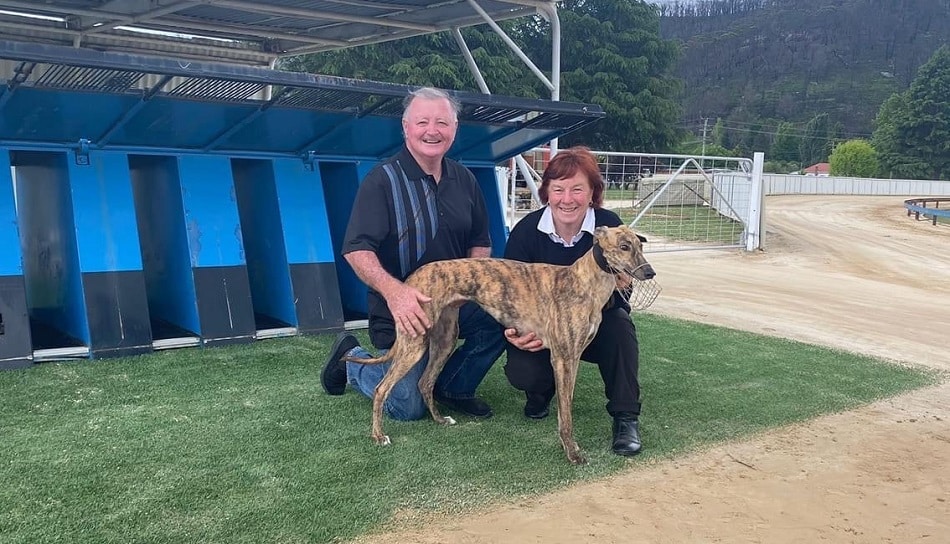
Caption: Dennis Barnes and his wife Ann with Nangar Gold after the sprinter broke the Lithgow 506m track record with a 29.06s run in late 2020.
By MIKE HILL
HE’S bred some champion sprinters over the years, including Group performers Swift Fancy and Smooth Fancy, but Dennis Barnes admits Nangar Diva is probably his favourite.
“She’s a special little dog,” said the man responsible for the highly successful ‘Fancy’ and ‘Nangar’ breeding lines.
Nangar Diva retired from the track in September 2020, with a 55:20-12-4 record and just more than $139,000 in prizemoney.
She could match it with the best sprinters in the land and qualified for five Group finals during 2019 and ’20.
The black daughter of Fabregas and Fancy Dancer finished third to Feral Frankie in the G3 New Sensation at Wentworth Park and was similarly placed behind Sennachie in the G1 Brisbane Cup.
A multi winner at both Wentworth Park and Albion Park, Nangar Diva also claimed the Bathurst and Temora Cups in a distinguished career.
“She was the best thing for us,” said a proud Barnes, whom we feature in this month’s Trainers Column.
“She won races at just the right time.
“She had a gentle nature in the kennel, was honest and always chased hard.”
And an ideal broodie to continue his very successful breeding program.
Barnes said breaking-in and educating pups had been the cornerstone of the family’s greyhound business at their 50-acre Cudal property, near Orange, in NSW.
He and his wife Ann have been in the industry together for almost 50 years.
“Ann just loves it and she is probably the main reason I have stayed in the sport for so long,” he said.
“We’ve been breaking-in 25-30 young dogs every month for more than three decades, but at 69 I’ve started to wind back a bit.
“My daughter and son-in-law, Sandra and Chris Spratt, have now taken over the education and break-in side of things.
“They’ve been doing it since 2016.”
Barnes, who has had his share of successes in minor feature finals, admits he has reduced his breeding and training operation in recent years while still searching for his first G1 victory.
“We’ve always bred dogs, although now I only have eight-to-nine in work at any one time,” he said.
Despite his small team, he usually has a handy performer in his kennel and Nangar Rocket is currently that dog.
“I think he’ll make a very good stayer,” Barnes said. “He’s going well over 600m and I’ll soon step him up to 700m.
“I really like the dog.”
The son of Feral Frankie-Little Nangar began his track career earlier this year with victory in the rich Maiden Final at the annual Grafton carnival.
“I’ve been going to Grafton for 35 years and that was my third win in the big maiden event,” he said.
Barnes also admitted he had big hopes for a couple of unnamed youngsters coming through the system.
1: How and when did you get involved in greyhound racing?
A: I was always interested in all forms of racing, so I decided to purchase two pups when I was 20, which was the start of my life in greyhounds. At the age of 23 I met my wife Ann, whose family were already renowned in the greyhound industry.
2: Who has been the greatest influence on you as a trainer?
A: Definitely my father-in-law Bill Miller, who had a lot of common sense and was a very knowledgeable breeder and trainer.
3: At what age do you start preparing a pup for racing?
A: At about 15 months once it’s broken in and had a spell.
4: How long does it take to prepare a pup for its first race?
A: My wife Ann and I pre-train our dogs for approximately four months from the time they come into the racing kennels.
5: What makes a good pup?
A: A good pup is based on a mixture of things – strong breeding lines, good rearing facilities with free open-range galloping, well-handled from an early age and good quality food.
6: Do you do anything special when preparing a young dog for its maiden compared to a seasoned performer?
A: Yes, for maidens we give them plenty of field trials to boost their confidence before their first start.
7: Do you have a set routine for all your greyhounds or do you vary training for individual runners?
A: Ann and I generally stick to a routine training scheduled which our dogs adapt to.
8: Do you have any unique or unusual methods you would like to share in regard to training?
A: Not really. We keep it pretty simple and basic by feeding rice, meat and vegetables in their diet. We slip our race dogs 350m up the straight every second day which may be different to other trainers.
9: Do you swim your dogs as part of your training regime?
A: No, we live in a cooler climate, so swimming really isn’t an option.
10: How frequently do you like to race your dogs?
A: We do not over-race our dogs and tend to space them out weekly sometimes fortnightly.
11: What’s your training routine for dogs between races?
A: If racing from Saturday to Saturday, we would slip Tuesday and Thursday up the straight.
12: Do you do all muscle work on your dogs and treat all injuries?
A: We check the dogs regularly for general soreness and treat them with our laser and magnetic field mats. For any injuries outside of muscle soreness we seek vet advice.
13: Which is the best greyhound you have trained?
A: Nangar Diva. She had a gentle nature in the kennel, was honest and always chased hard.
14: What do you consider is the best greyhound track in Australia and why?
A: It’s hard to pinpoint just one track. We have good local tracks. However, I have a soft spot for Grafton as our dogs seem to gallop through the bigger turns better and enjoy the bigger straights.
15: What does the industry need most going forward?
A: More targeted marketing and financial incentives to get younger people involved in not just owning but training greyhounds. A new owner and trainer could be set up with an experienced trainer who could provide ongoing advice. Dubbo track sets a good example with entertainment (concerts, bands, kids’ activities etc) and dining facilities which bring good crowds each week. It would be great to see this at other tracks as well.
16: What is the best advice you could give someone just starting out as a trainer?
A: Be patient. Make sure your dogs are fit with slipping or weeks of free galloping before going to a trial track. A lot of people will have advice, think about the advice and then use your own common sense to do what works for you and your dog. The main thing is it to look after and care for your dogs with the best of your ability.



